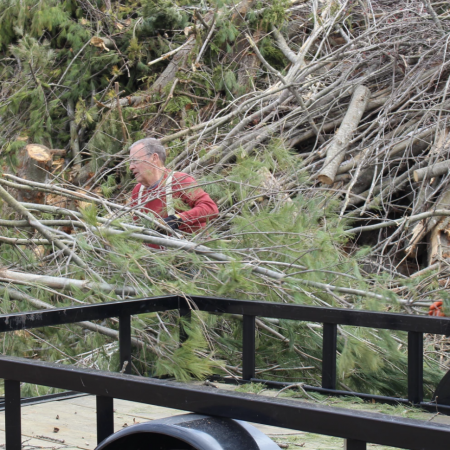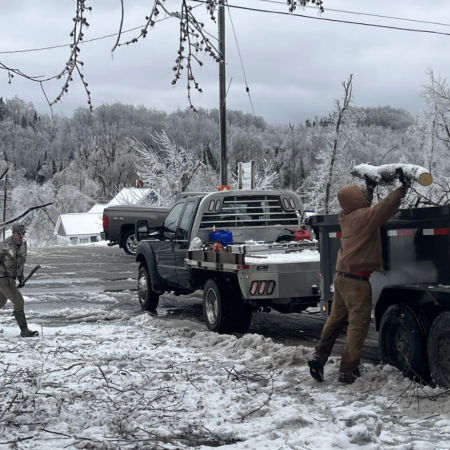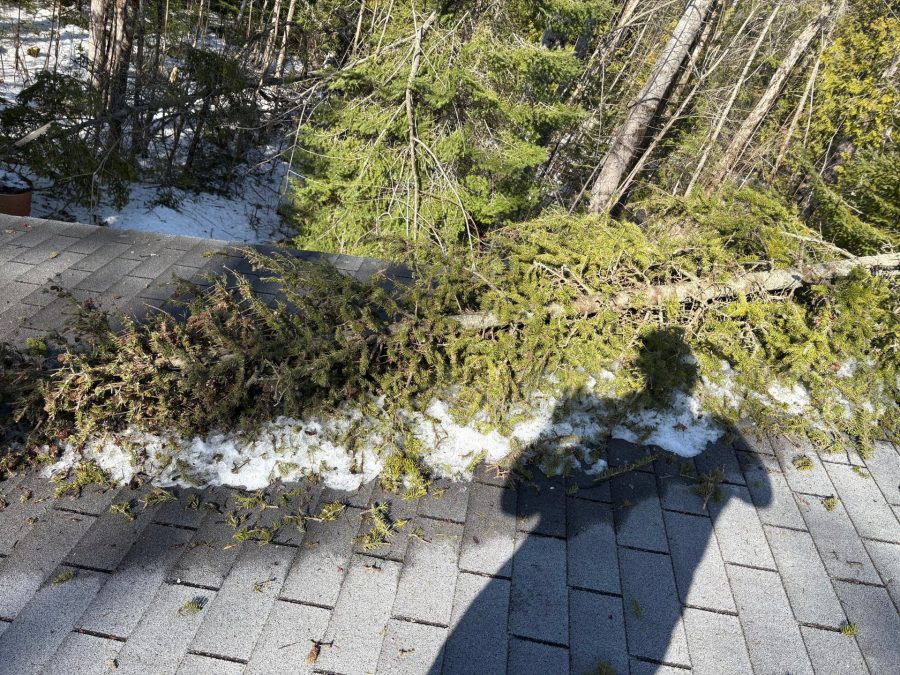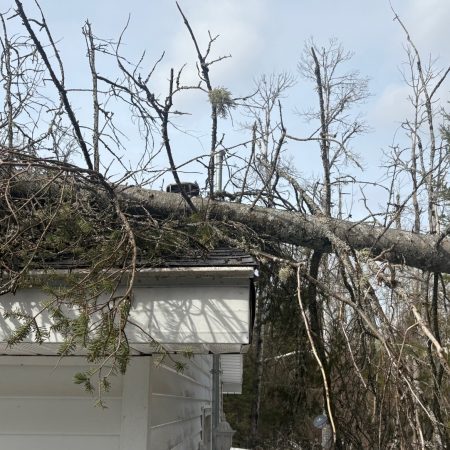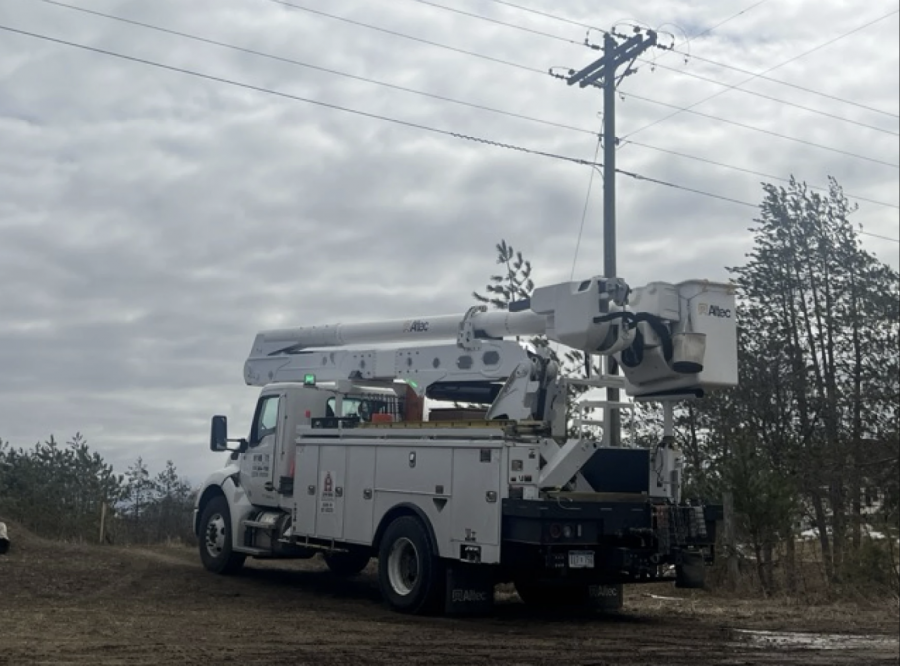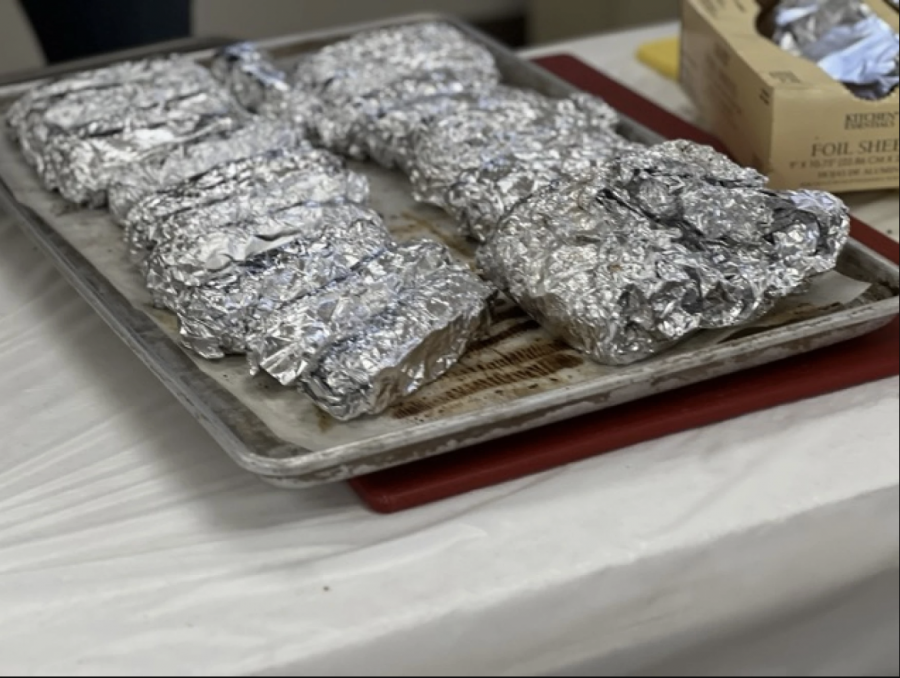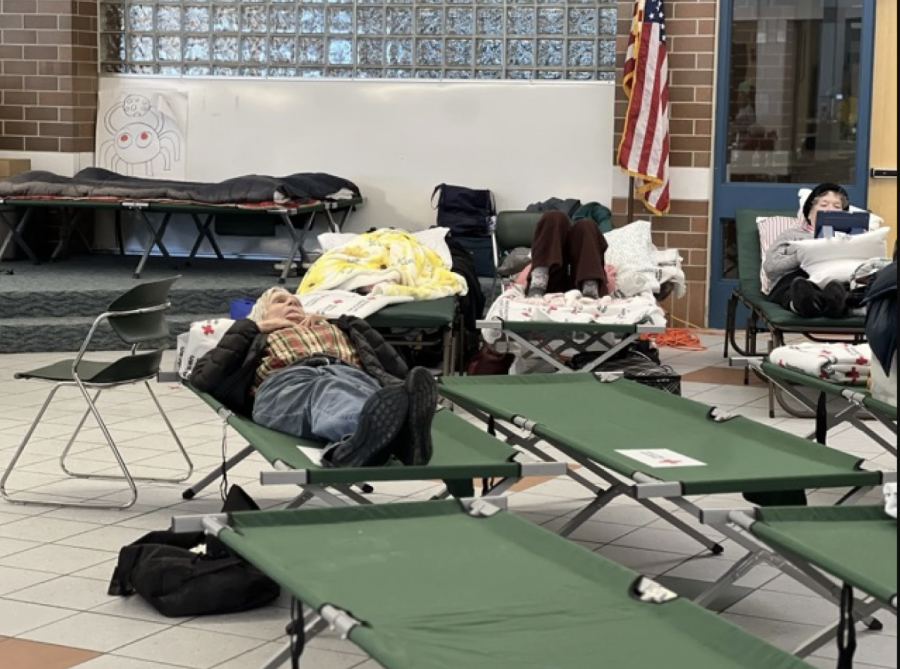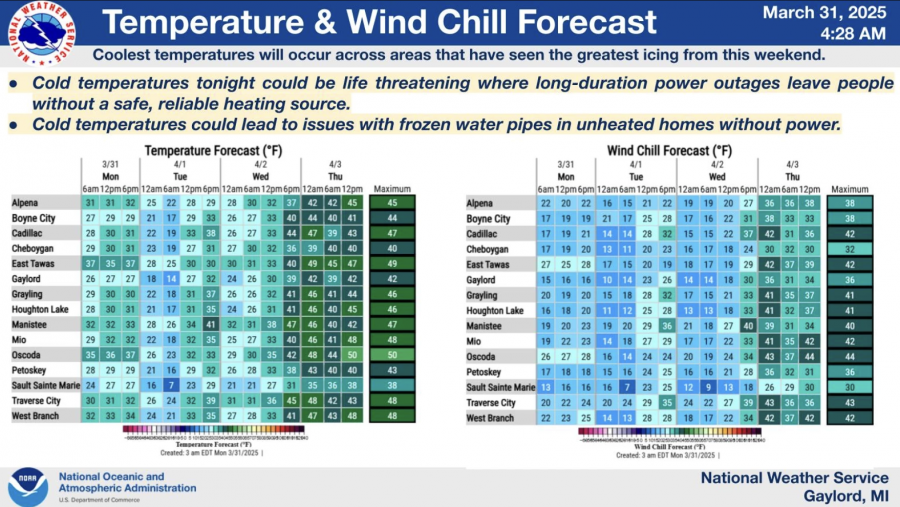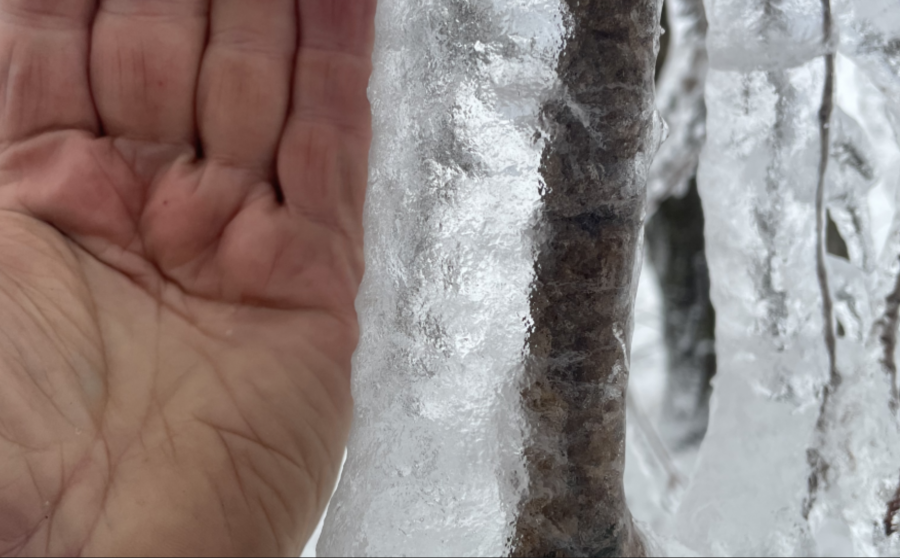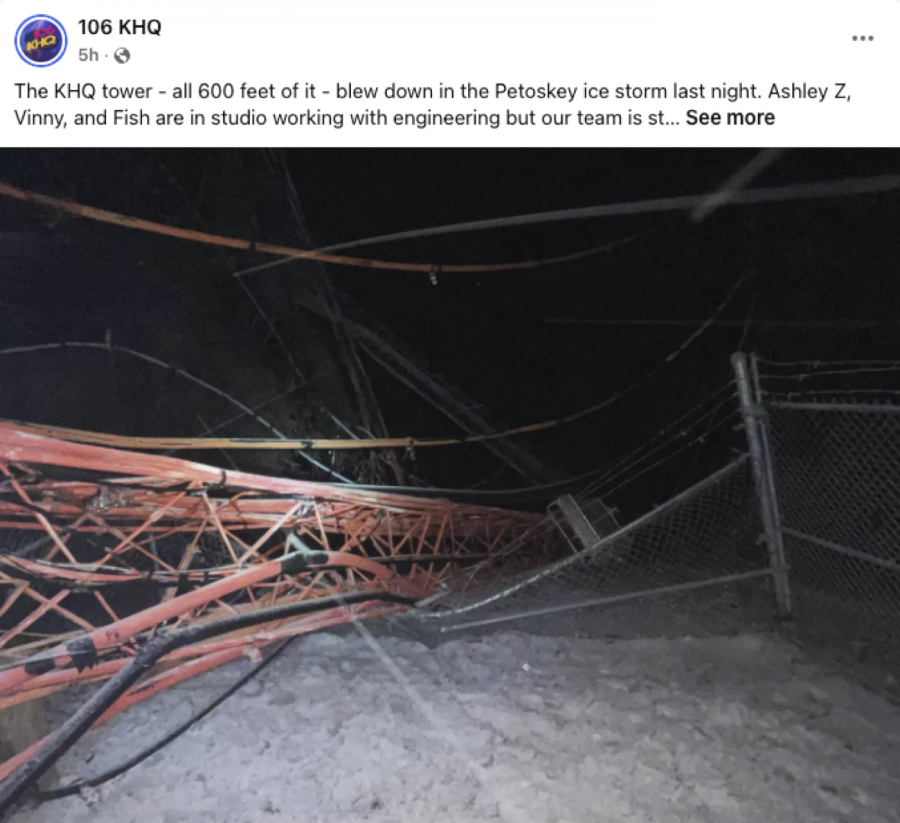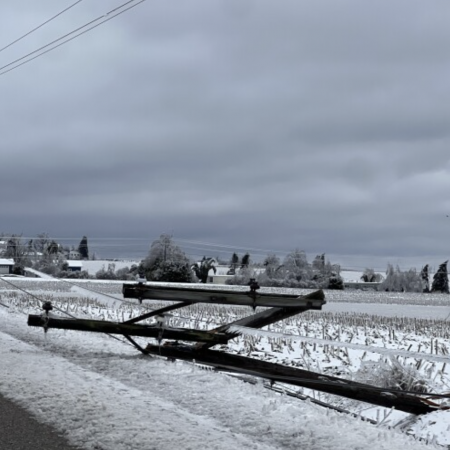Northern Michigan moves to clean up ice storm debris — by making energy
Editor’s note: This story was originally published by Interlochen Public Radio on April 30, 2025.
At a giant dirt lot off a side road in Emmet County, the air smells sharply of pine.
Enormous piles of logs and branches sit around the property.
Terry and Nancy Chamberlin drag pine branches out of the bed of a black pickup truck and a small trailer — trees from their five-acre property in Alanson.
“We got hit real hard on this. We went out here — I think this is our 10th double trip down here in three days — and we’re just having a ball doing this,” Terry said. “And then I can start in the woods, which is going to take me two years to clean up.”
Debris from a massive ice storm at the end of March was strewn across the region. A lot of it fell on power lines, causing widespread outages.
But now, the same debris that knocked out the power a few weeks ago could be used to make electricity.
‘Doing the best that we can’
Utilities worked to clear much of the debris from power lines, and it was up to local emergency management teams and road commissions to figure out what to do with debris piling up around right of ways along the road and on private land.
So some set up these drop off sites, where people can bring branches and trees that were damaged or destroyed by the ice.
Lindsey Walker, who works in outreach for Emmet County Recycling, said they were able to pivot to collecting wooden debris. Usually, a company will come through to grind wood debris people drop off at the county’s waste facility into wood chips.
“We have to justify mobilizing these very expensive grinders and haulers of this material. And so every two years, we’re normally grinding our wood waste,” she said. “We need to have about 5,000 cubic yards on the ground at any time, and now we’ve got about 10 times the amount of that.”
Some established drop-off sites have been open around the clock, receiving debris by truck, trailer and even dump trucks.
“Having sites that are free and ample space for the public to bring debris is really important,” Walker said. “So this site has plenty of capacity for further debris, and then once we get that material ground, then we’re hauling, and so there’s this process of cleaning up sites as they go along. This is like us doing the best that we can with the resources that we have.”
Turning heat into light
Some of the woody debris might go to places like landscaping businesses to use as mulch. But they’re also selling it to biomass facilities nearby, which will turn that into energy.
“I like to use the little saying that we were green before green was cool,” said Tom Clift, the director of biomass operations at NorthStar Clean Energy, a company that runs four such facilities, including one in Grayling. “We’ve been in the renewable power business for a long time.”
NorthStar is one of the companies buying and burning that wooden debris from the storm. It uses that to create electricity. In all, the facility powers up to 38,000 homes. It works with another company, AJD Forest Products, to source and organize deliveries.
“All wood is graded by different levels,” he said. “Biomass levels are really looking at the [British thermal unit] of the wood. If it’s a higher quality BTU product they’ll pay more because it will burn better.”
Clift said they’re not cutting down trees for wood to produce that power.
“Any wood product that we use here was either going to be left on the forest floor, to turn into methane and be released on its own, or it’s other materials that would have gone to the landfill,” he said.
Dealing with forest management and debris after natural disasters is something other areas of the country have been trying to figure out as well, such as places in the southeast hit by Hurricane Helene.
But officials say this is an unusual issue in northern Michigan, which hasn’t typically faced the same kinds of disasters. Having biomass facilities in the region make dealing with debris in this way easier.
Not a new idea
Biomass refers to a range of fuels, from animal manure to trash to wood. Using biomass for energy has a long history. For instance, in the United States residue from wood pulp manufacturing has been a popular source of fuel for electricity over the decades, though that has declined, said Brent Sohngen, a professor at Ohio State University who studies the economics of forestry.
The relationship between biomass-fueled energy and climate is far from straightforward.

Public health researchers and environmental groups have raised alarms about biomass for years, pointing to pollution from facilities, health issues and harm to nearby communities, which are often communities of color or low-income communities, according to advocates. Critics say framing of biomass energy as better for the climate is misleading; it can rely on logging, and burning matter like wood also emits greenhouse gases. And some argue the focus should instead be on cleaner forms of energy, such as solar.
There are situations where biomass-fueled energy will emit more carbon than it saves, Sohngen said — for instance, logging old growth trees for fuel. But in circumstances like the ice storm, biomass could be considered a carbon-neutral energy option, because that wooden debris would otherwise decompose over time, emitting greenhouse gases.
“The nice thing about taking that material and using it for electricity is that it creates electricity, and if you’re creating extra units of electricity from that material, then you’re potentially offsetting some other source of electricity on the system on the grid,” such as coal, he said.
Removing woody debris from the landscape to burn for electricity poses other issues. One example: Dead and dying trees provide a wide range of benefits that should be considered before removing them.
“There’s huge numbers of bugs that will basically use that wood material for growing themselves, and there’s animals or birds or other kinds of things that’ll use the bugs for their own life cycle,” said Sohngen. “It’s really important that, you know, we can’t just take all of the dead material out of a forest and expect a forest to function well.”
There may also be an increasing interest in biochar following disasters like Helene, he said. Biochar is an almost pure form of carbon made from heating up materials like plant matter, and can be spread out in farm fields or forests.
“What we found is that this biochar material has such a long life that it’s a way to lock up a lot of carbon in the forest system for many, many years — millennia, even,” he said.
At another drop-off site in Emmet County, Lindsey Walker walked around yet another mound of logs and branches. Biochar is on her mind as well.
“We rank it by highest and best use,” she said of dealing with the debris. “In my world of worlds, we would be making biochar out of this, because biochar has such value for composting operations, for water filtration, for sequestering PFAS. I mean, the opportunities for biochar are endless.”
But such operations aren’t an option right now, she said, so they turned to biomass and other uses, like mulch for landscaping.
For now, some debris drop-off sites will be open until things slow down, though others are closing.
Road commissions are asking people not to leave wood along right-of-ways. It’s also been a dry spring so far, and the Michigan Department of Natural Resources has some restrictions on burning in place and recommends that people check on burn permits and conditions in their area.
One Cheboygan road commission official told IPR they reached out to people in the timber industry to ask about selling the wood they’re collecting at sites. The only reply they’ve received so far came from a lobbying group, which said the wood chip market is flooded.
The post Northern Michigan moves to clean up ice storm debris — by making energy appeared first on WDET 101.9 FM.
